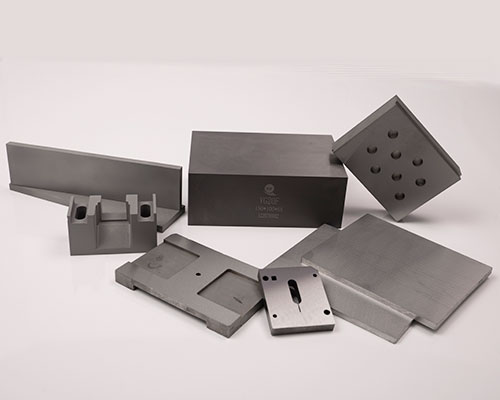
The basic situation of cemented carbide market in our country
According to the data provided by the cemented Carbide Branch of China Tungsten Industry Association, in 2011, there were more than 300 cemented carbide production enterprises in China, with more than 30 professional research institutes, and more than 25,000 employees in the whole industry. As of 2011, the company has a capacity of 100,000 t/a of tungsten concentrate, 180,000 t/a of tungstic acid and tungsten salt, 62,000 t/a of tungsten carbide, 38,000 t/a of hard alloy, as well as supporting supply capacity of Co, Ni, Ta, Nb and Ti.
In 2011, the output of China's hard alloy was 23,500 tons, the sales revenue of the hard alloy industry was 20.9 billion yuan, the export of hard alloy was nearly 5,000 tons, and the export earned foreign exchange was more than 360 million US dollars. The output of deep processing hard alloy products reached 6,600 tons, accounting for 1/3 of the total output of alloy. The cemented carbide products are basically complete in variety, with more than 40,000 specifications and models, and the output and varieties can basically meet the needs of various economic fields in China. Alloy new material manufacturers
The main problems of our hard alloy industry are as follows: first, the enterprise scale is small and the industrial concentration is not high. According to incomplete statistics, 199 cemented carbide enterprises average annual output of 176 tons, average annual output of only 86 tons, annual output of more than 1000 tons of enterprises only 4. Second, less investment in science and technology, lack of high-end technical personnel, technology research and development ability is weak. The investment of our hard alloy industry in science and technology is less than 3% of the sales revenue, the level of science and technology research and development is not high, and the original core technology achievements are few. Third, the product quality level is low, and the product structure needs to be adjusted. China's output of hard alloy accounts for more than 40% of the world's total output, but the sales revenue of hard alloy is less than 20% of the global, mainly due to the high value-added products such as high performance ultrafine alloy, high precision and high performance grinding coating blades, super hard tool materials, complex and different products, precision hard alloy NC cutting tools, and the lack of deep processing supporting facilities and varieties.

With the rapid expansion of China's automobile industry, the demand for cutting tools for auto parts processing is increasing, and the demand for cemented carbide in China's steel, transportation, construction and other fields is also growing. In the strategic prospect of foreign cemented carbide multinational companies, the Chinese market has quietly changed from a supporting role to a leading role.
It is pointed out that by the end of the 12th Five-Year Plan, the output of cemented carbide has reached 30,000 tons and the sales revenue has reached 30 billion yuan. The output of deep-processed products accounts for more than 40% of the total amount of cemented carbide. Exports will double from the 11th Five-Year Plan, aiming to exceed US $1 billion. Hard alloy will develop to the direction of deep processing and tool matching; To the direction of ultra-fine, ultra-coarse and coating composite structure; To circular economy, energy conservation and environmental protection direction; Develop to the direction of precision and miniaturization.